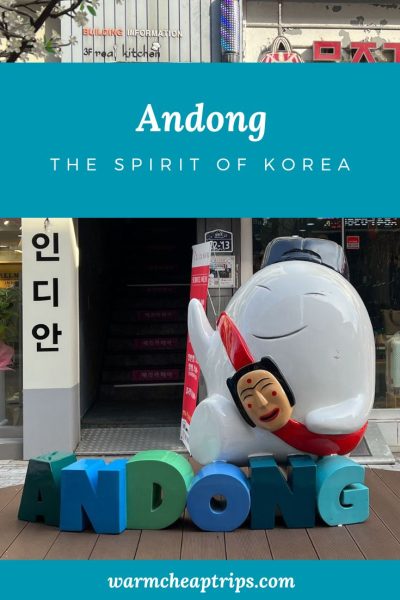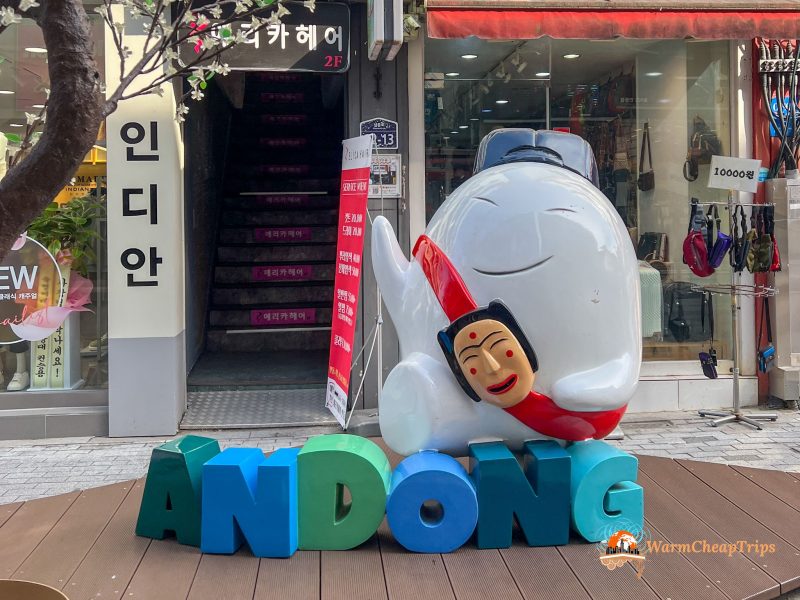“Take me to the most Korean place in Korea,” Queen Elizabeth II asked during her visit to Korea, and so she was taken to Andong.
Rarely included in South Korea travel itineraries, Andong is a stop far from the hallyu wave sweeping the world with K-pop and K-dramas, beauty products and treatments, hanbok photo sets, and Instagrammable cafés. Yet it is a place where the spirit of Korea endures, and where you are transported 600 years back in time in the traditional Hahoe Village.
Hahoe Folk Village is the reason that led me to choose Andong as an addition to Seoul on my one-week trip to South Korea, but I discovered a charming and pleasant town. I am very glad I decided not to do just a day trip from Seoul to see the village, but to spend a night in Andong, allowing me to explore more of this Korean town.
Visiting Hahoe Folk Village
As soon as we arrive by KTX to Andong station, we take a taxi straight to Hahoe Folk Village, where we leave our overnight backpacks in the lockers at the info point.
This village has a history of over 600 years, founded by the Ryu family during the Joseon dynasty, and it has reached the present day almost intact, with several hanok and traditional thatched-roof houses still inhabited. Along with Yangdong Village in Gyeongju, it became a UNESCO World Heritage site in 2010 as a representation of classic Korean villages where architecture and Confucian tradition meet.
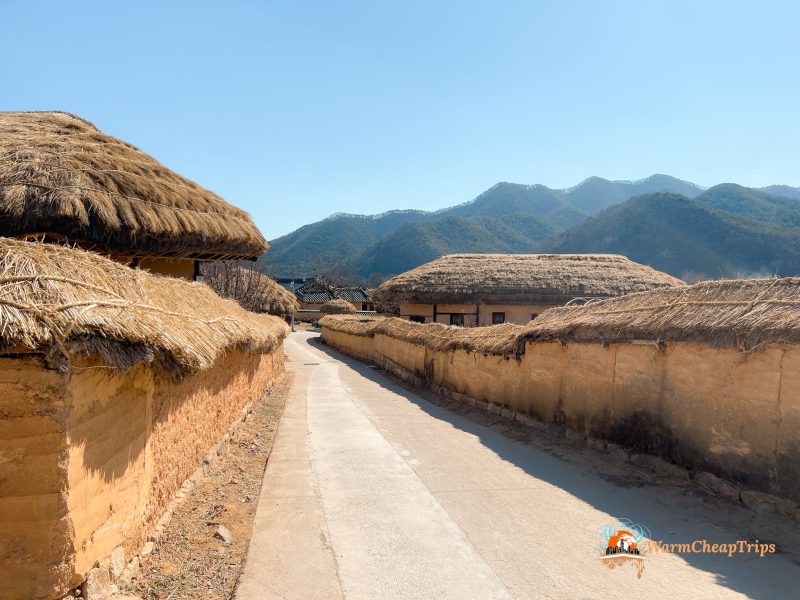

Hahoe Village is small and can be comfortably visited in a couple of hours. While some buildings are open to the public, allowing a look at classic Korean architecture, the most exciting part for me was walking along the dirt streets, wooden houses with thatched roofs, and kimchi fermentation jars. Some houses, belonging to aristocratic or wealthier families, have classic black tiles, and considering the almost complete absence of tourists (especially in winter, when I visited), it really felt like being transported back in time.
Hahoe is also famous for its traditional masks, used in Korea’s oldest theatrical performance (also an intangible UNESCO heritage), which can be seen at the Hahoe World Mask Museum next to the ticket office. In the afternoon (except in winter), it is also possible to attend a free performance at the Open Air Theatre for Hahoe Mask Dance Drama near the bus stop.
Useful Information for Visiting
Hahoe Village is 20 km from Andong Station (which itself is about 7 km from the city center) and can be reached by bus 210, which is infrequent and a local bus taking about 40 minutes. Alternatively, you can use Uber for about €20, which takes half the time. In both cases, you will arrive at the parking lot where the ticket office, mask museum, and a small square with a few restaurants are located (where I recommend having lunch). From there, a shuttle bus takes you to the village entrance.
The entrance ticket costs 5,000 won and, in addition to the shuttle, also includes access to the Mask Museum. It is open year-round from 9:30 am to 5:30 pm (4:30 pm in winter), but I recommend going on weekends or Wednesdays so you can also watch the mask performance (between March and October).
At the end of September, there is the Hahoe Mask Festival, and the village is filled with performances and shows, making it even more unmissable, while in spring, several cherry trees line the river surrounding the village. However, Hahoe is visitable year-round, and in other periods, you may be almost the only tourists!
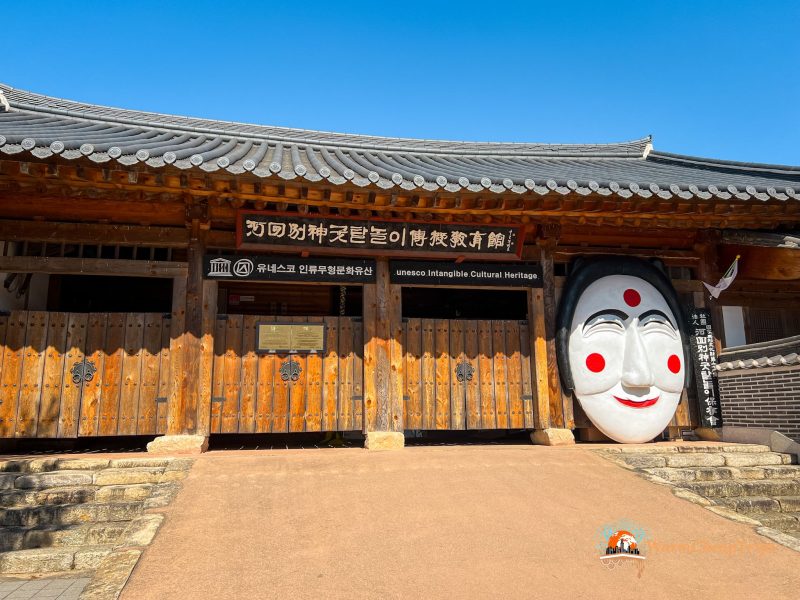

Bongjeongsa Temple
After leaving Hahoe, we take an Uber directly to our accommodation,Jukheon Traditional House, a historic house located a few minutes’ walk from Bongjeongsa Temple, which, besides being a temple from the Silla period with over 300 years of history, is also part of the Mountain Monasteries of Korea, listed as a UNESCO World Heritage site.
Bongjeongsa Temple is a complex perched on a hill, with some wooden buildings dating back to 1300, making it the second oldest wooden building in Korea. Entrance is free, and it should also be possible to participate in temple stay programs, although I could not find updated information in English.
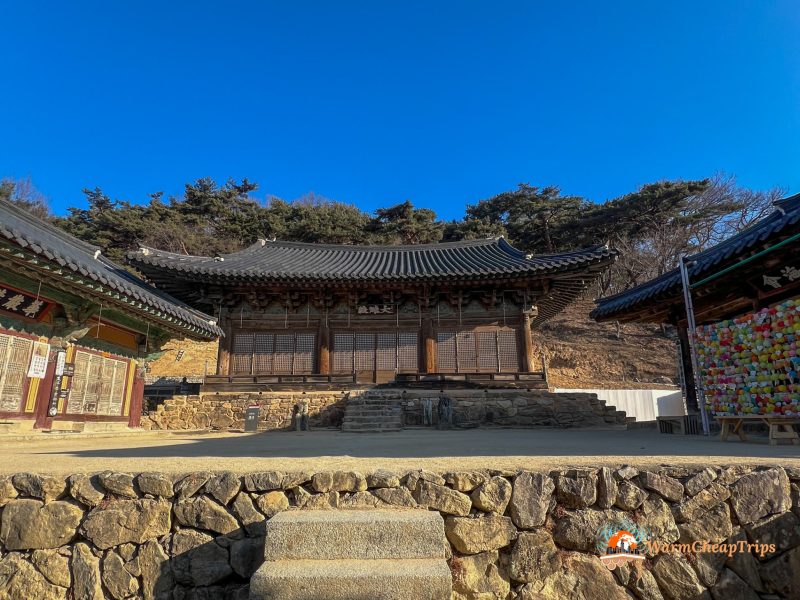
Seongjingol Cultural Village
Like many Korean cities, Andong also has its mural village. These Instagrammable Cultural Villages, however, stem from a darker side of Korea’s history. The Daldongnae were the poorest areas of the cities, initially a refuge for those fleeing the city center to the hills to escape exploitation by the Japanese during the occupation, and later where the poorer population ended up living due to the lack of housing and the consequent rise in city prices.
Many artisans and artists lived in these more challenging areas, with steep stairs and narrow streets, and more recently, this has been transformed into beautiful murals, handmade shops, and coffee shops.
Seongjingol Mural Village was actually founded in 2009 as an artistic project around the local elementary school, with continuous ups and downs between drawings and statues everywhere. Walking here feels like walking in an illustrated book, where the thrill of chasing the white rabbit pushes you up step after step and into small alleys opening views of the city!
I am not particularly a street art lover, but I really liked Seongjingol, perhaps because it is so quiet and little publicized (I found it while exploring on Google Maps, but couldn’t find information about it), and the beautiful, warm day added to the magic! Every corner is a photograph, trying to understand what those colors and images represent, delicate yet so vivid. Definitely a wonderful surprise!
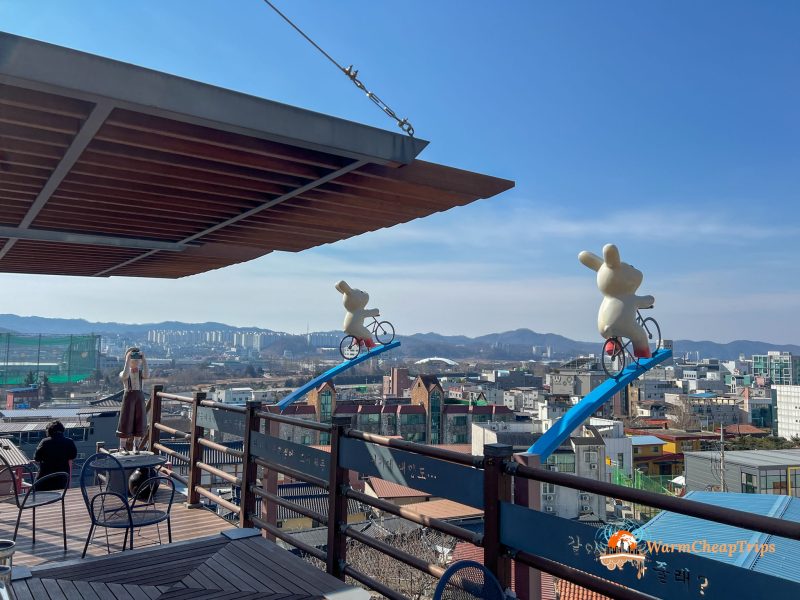

Other Things to See in Andong
Even searching online, I hadn’t found much information on what to do and see in Andong, beyond Hahoe Folk Village and Bongjeongsa Temple, but once I arrived and picked up the city tourist brochure, I discovered that Andong actually has four UNESCO sites (and one intangible heritage), including the Dosanseowon Confucian Academy and Nongam House, a traditional house of the Yeongcheon Yi clan, where an important poet was also born. Unfortunately, I had not planned enough time to visit them, and it would have been rather complicated using public transport, as both are about 30 km from the city center, in the opposite direction of Hahoe Folk Village.
Closer to the center, you can visit Andong Folk Village to deepen your understanding of local history and culture and admire traditional buildings reconstructed in the adjacent village. The Wolyeonggyo Bridge, featured in many Korean dramas, is also here and is beautifully illuminated at night, creating a magical atmosphere.
For alcohol enthusiasts, Andong also has the Soju and Food Museum, dedicated to this Korean rice-based beverage, where you can participate in a soju-making experience! I didn’t attend, so I can’t confirm if the experience is available in English.
Even though it was February, thanks to a relatively warm sunny day, we really enjoyed walking through the central market and surrounding streets, populated by charming statues of what I imagine is Andong’s mascot.
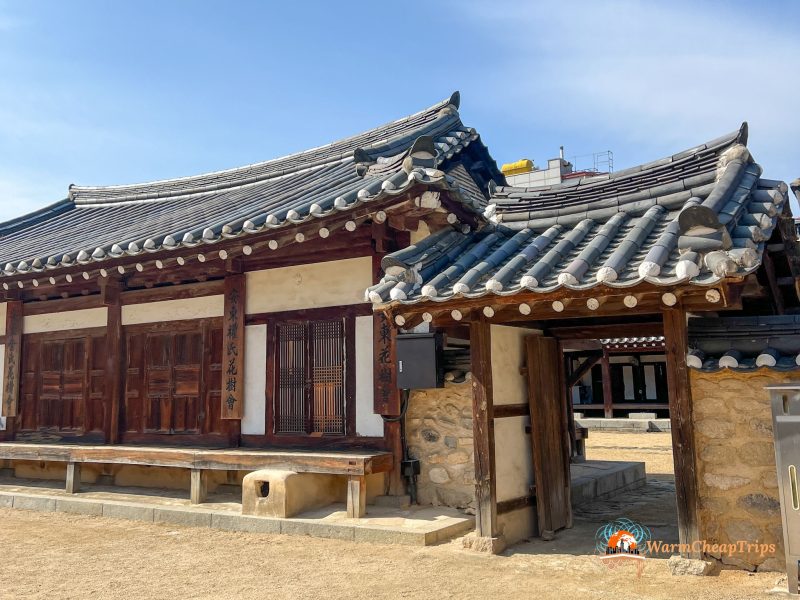

Where to Stay in Andong
To fully immerse yourself in Andong’s traditional atmosphere, we opted to stay in a 140-year-old house on the hills outside the center, a short walk from Bongjeongsa Temple, also visited by Queen Elizabeth II: JJukheon Traditional House.
The room is simple, just enough space for futons on the floor, always with underfloor heating, and the bathroom is shared in the inner courtyard. In the outer courtyard, except in winter, there is also a small café open to everyone and a small museum-warehouse with traditional tools used in Korean farms. In the morning, a simple but sufficient breakfast is served in the room or in the courtyard. The owner is very kind and loves to share stories of international guests who chose this beautiful house for their stay. We paid 114,000 won, for one night. Nearby is the local bus stop that takes about 30 minutes to reach the station, though services are not very frequent. Highly recommended for those seeking a local experience.
An equally unique alternative, which we debated until the end, was staying inside Hahoe Folk Village! Rakkojae is the only choga-house where overnight stays are possible. It consists of four traditional houses, designed according to Confucian philosophy, with compressed mud walls, thatched roofs, and sliding doors. Inside, the ondol system heats the floor. The rooms are simple, with floor mattresses, each with a private bathroom. Breakfast is included, and dinner is available if booked in advance. The cost is higher, but it’s definitely worth the experience of enjoying the village’s nighttime peace.
Finally, another accommodation that tempted us greatly was Okyeon Geongsa, just outside Hahoe Folk Village. A splendid 500-year-old traditional hanok, still owned by the same family, now in its sixteenth generation!
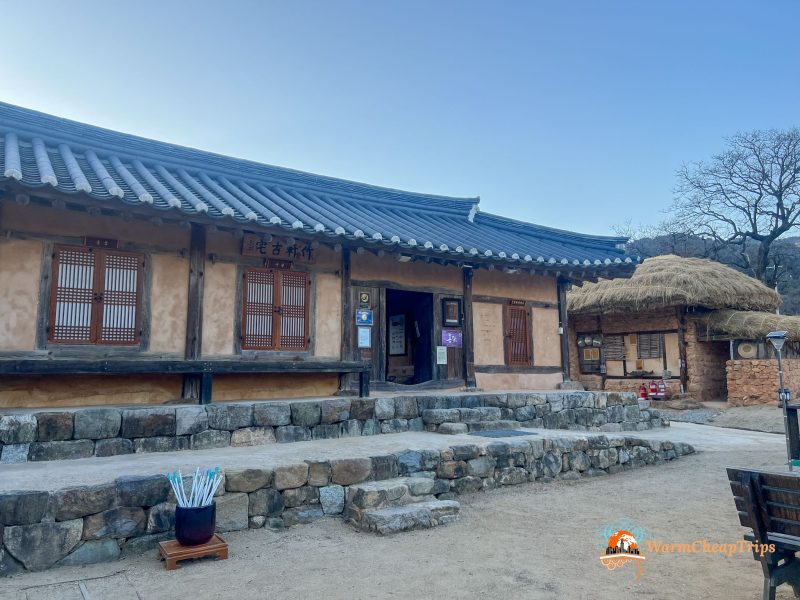

How to Get to and Around Andong
Andong can be reached from Seoul in about two and a half hours by KTX, the high-speed train, which I highly recommend booking in advance. There are also various buses, but they take longer and you may get stuck in traffic. Other buses connect Andong to cities like Daegu or Busan. The station is about 7 km from the center, but there are frequent buses to different areas of the city, though Uber remains the best option for saving time and is very cheap.
In general, buses cover all areas of the city but are relatively slow and not very frequent. For example, to reach Hahoe Folk Village, the trolley bus 210 takes almost an hour from the station to the village, whereas Uber takes only about 20 minutes.
I also considered renting a car, but online availability was zero, and Lotte Car Rental seems to have closed in Andong. At the station, I did see a rental booth, but I didn’t inquire further, so I’m not sure if it serves foreign tourists or non-Korean speakers.
If you need to leave luggage in storage, both at the station and at the Hahoe Folk Village Info Point, there are coin lockers available.
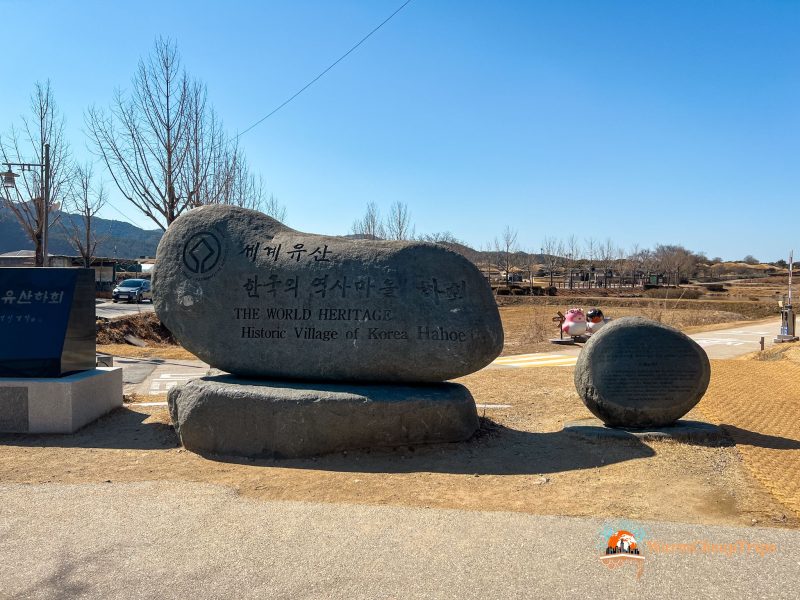

Although little known, Andong is absolutely a must-visit stop in Korea, especially if you love history and traditions! Online information is scarce, and even Andong’s tourism website seems not to work, so if you have visited this location and have other tips, leave them in a comment to help fellow travelers!
Did you find this article useful? Buy me a coffee 🙂
